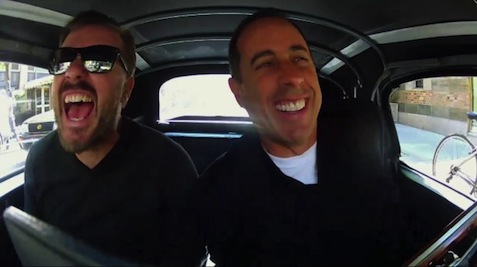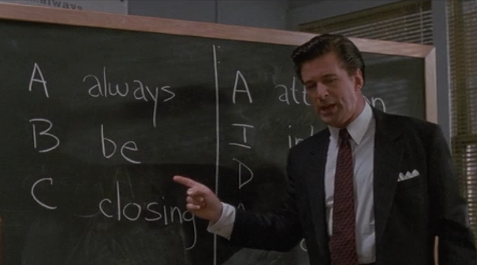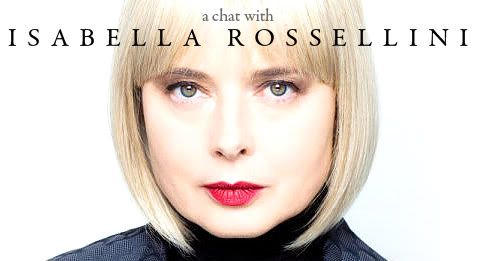Weekly Web Series Review: Comedians in Cars Getting Coffee
 There may have never been a more self-explanatory title for a web series than Jerry Seinfeld‘s latest project, “Comedians in Cars Getting Coffee.” The format is simplicity itself: for each episode, Seinfeld picks a different car, picks up a different comedian friend, and they go and get coffee and, often, a meal. Throughout the drive and the meal, they talk about various things, all improvised and frequently very funny. The main charm of the series, though, is watching the comedians make each other laugh. At best, it is almost like actually hanging out with a couple of very talented people for a little while. At worst, it is rather lazy and inconsequential, and Seinfeld sometimes seems to be exaggerating his reactions to the jokes told by his guests.
There may have never been a more self-explanatory title for a web series than Jerry Seinfeld‘s latest project, “Comedians in Cars Getting Coffee.” The format is simplicity itself: for each episode, Seinfeld picks a different car, picks up a different comedian friend, and they go and get coffee and, often, a meal. Throughout the drive and the meal, they talk about various things, all improvised and frequently very funny. The main charm of the series, though, is watching the comedians make each other laugh. At best, it is almost like actually hanging out with a couple of very talented people for a little while. At worst, it is rather lazy and inconsequential, and Seinfeld sometimes seems to be exaggerating his reactions to the jokes told by his guests.
The series begins with Seinfeld’s most obvious guest, Larry David, with whom he co-created one of the most successful sitcoms of all time, “Seinfeld.” There seems to be some effort on Seinfeld’s part to pick a car that reflects his guest’s personality, as in this first episode, in which he chooses a 1952 VW bug as a symbol of David’s humble, unassuming nature. David, along with his other dietary idiosyncrasies, slightly messes up the premise right off the bat by ordering tea, but he offers one of the series more interesting insights. Discussing the difference between cigars and cigarettes, he suggests that a cigar imbues the smoker with an air of wisdom because of the time it takes to smoke, which lends itself to a “contemplative” posture.
Another very intelligent guest is “Mystery Science Theater 3000” creator Joel Hodgson in episode 5, who offers some interesting insights about nostalgia and economics. On the former, he says that the reason people love to look back at the past is that “You know what you’re going to say … you know what to say about the past, and you don’t know what to say about the future.” When Seinfeld brings up the mysterious economics of a restaurant, Hodgson offers a musical analogy: “The guy who sells the guitars makes the money, and not the guy in the band … How many guitars have you bought over the years … I’ve bought … six, and I don’t play the guitar.”
One of the series’ most enjoyable episodes is the third, in which Seinfeld’s guest is the great stand-up comic Brian Regan. The reason it works so well is that their conversation throughout feels like a joke-writing session, as if the two comedians are co-writing a sitcom or a stand-up set, often finishing each other’s sentences and collectively brainstorming jokes on each topic that comes up. Another especially good one features Alec Baldwin, whose overall attitude toward Seinfeld is playfully hostile, though he shows great humility when he credits the cast and writers of “30 Rock” for teaching him how to be funny. His story of a Rip Torn bar fight is not be missed, and this is where “Comedians in Cars Getting Coffee” excels: it presents very funny, interesting people just being naturally funny and interesting.
You can follow us on Twitter and Facebook for content updates. Also, sign up for our email list for weekly updates and check us out on Google+ as well.
Posted in: Entertainment, Humor, Videos
Tags: 30 Rock, Alec Baldwin, Brian Regan, cigarettes, Cigars, Comedians in Cars Getting Coffee, comedy, Ezra Stead, guitars, Jerry Seinfeld, Joel Hodgson, Larry David, Mystery Science Theater 3000, Rip Torn, Seinfeld, stand-up comedy, Volkswagen, web series, Weekly Web Series Review












